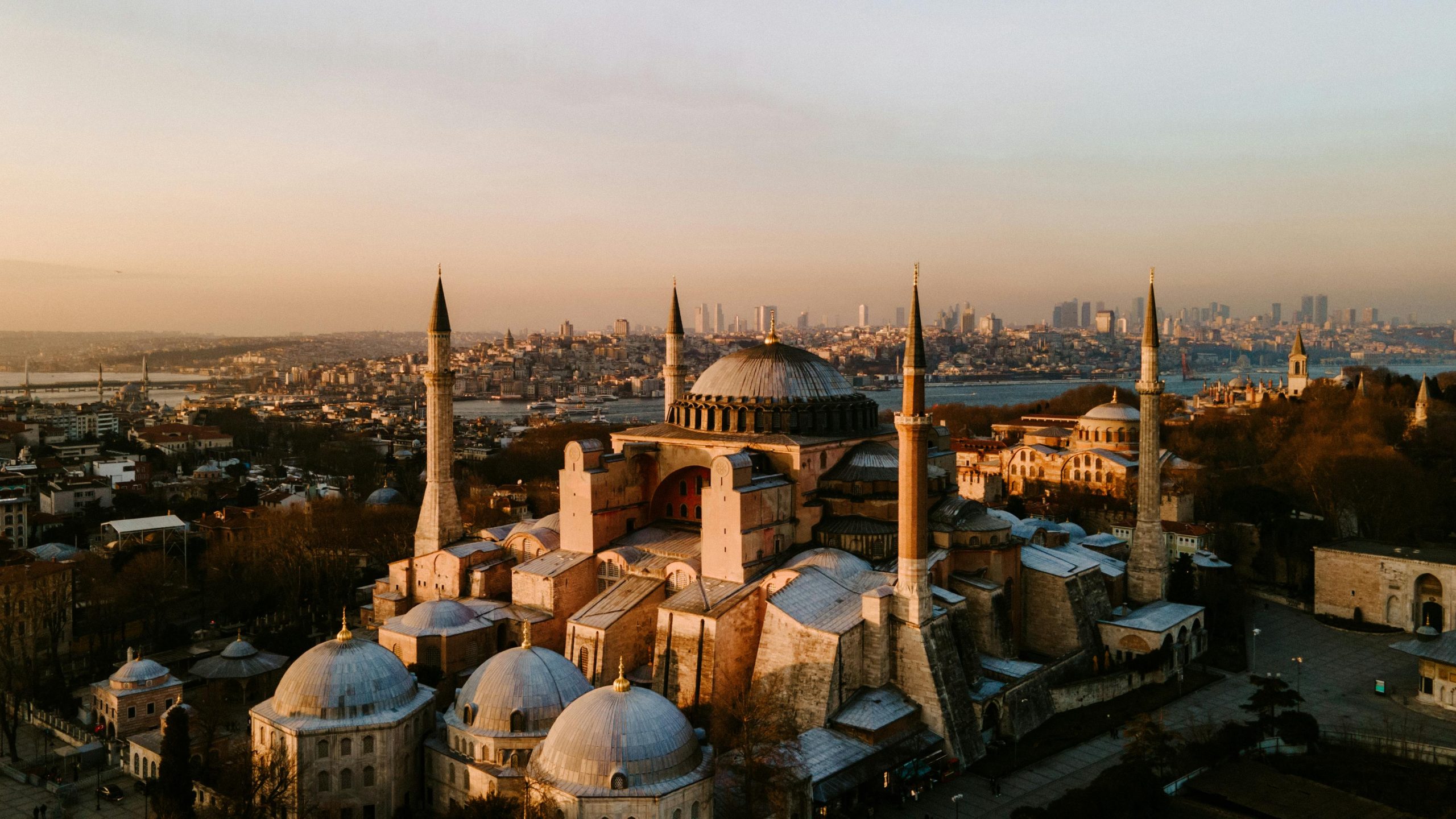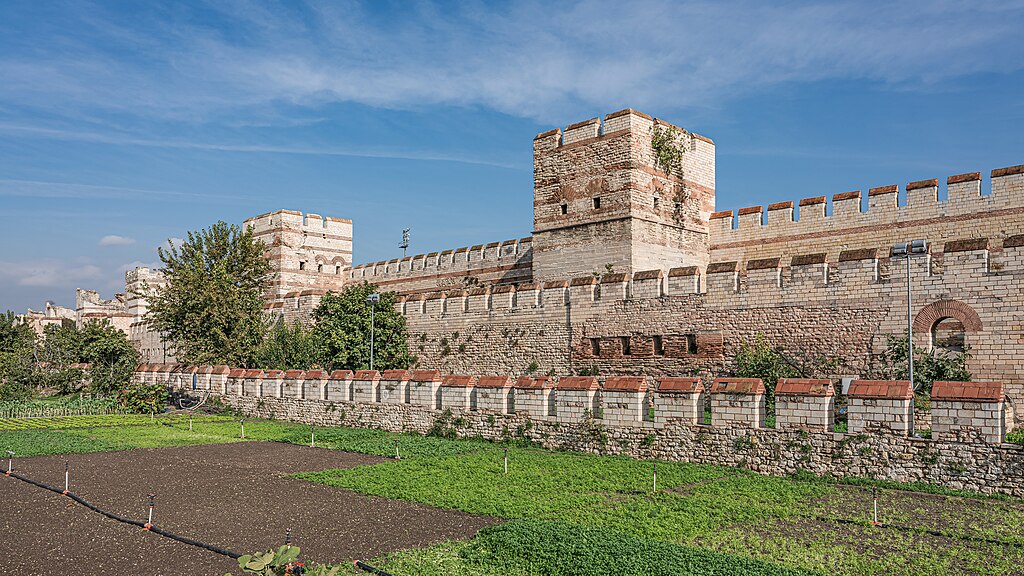Serpent Column, Istanbul
Historic Site in Istanbul

In the heart of Sultanahmet Square, surrounded by the grandeur of mosques and palaces, stands a modest yet extraordinary relic — the Serpent Column. Cast in bronze over 2,400 years ago to commemorate the Greek victory over the Persians at the Battle of Plataea, this ancient monument is one of the oldest surviving artifacts in Istanbul and one of the must-see places in Istanbul for anyone fascinated by antiquity. Originally topped with a golden tripod dedicated to Apollo, it once gleamed proudly at the Temple of Apollo in Delphi before being moved to Constantinople by Emperor Constantine the Great in the 4th century CE to decorate his new imperial capital.
Though time has reduced it to a weathered spiral of bronze, the Serpent Column still radiates historical power. Located beside the Walled Obelisk and Egyptian Obelisk in the former Hippodrome — now Sultanahmet Square — it's a great place to visit on a walking tour of Istanbul, linking the city's Byzantine and classical pasts in a single, tangible form.
History and Significance of the Serpent Column
The Serpent Column, also known as the Tripod of Plataea, was created in 479 BCE from the melted-down weapons of defeated Persian soldiers. It symbolized the unity of 31 Greek city-states who joined forces against the Persian Empire during the Persian Wars. The intertwined serpents supported a golden cauldron, a tribute to Apollo at Delphi.
When Emperor Constantine the Great established Constantinople as his new capital in the early 4th century CE, he sought to adorn it with art and relics from across the empire. The Serpent Column was brought from Delphi and placed in the center of the Hippodrome — the grand stadium for chariot races and imperial ceremonies. Though the original golden cauldron was likely never moved, the bronze column stood proudly for centuries until the early 1700s, when the three serpent heads that once crowned it were broken off. Fragments of these heads are now preserved in the Istanbul Archaeology Museum, offering a rare glimpse into one of antiquity's most symbolic masterpieces.
Things to See and Do at the Serpent Column
Today, visitors can view the Serpent Column from ground level in Sultanahmet Square, positioned between the Egyptian Obelisk and the Walled Obelisk — remnants of the Hippodrome's central spine. Though only about 5 meters of the column remain, its twisted bronze coils are remarkably well preserved, bearing the patina of centuries. A closer look reveals the faint outlines of the serpents' bodies spiraling upward, a powerful echo of Greece's triumph and Constantinople's imperial ambition.
If you visit the nearby Hagia Sophia, look for 18th- and 19th-century paintings that depict the Serpent Column in its complete form, with the intertwined heads still intact. It's a striking reminder of how ancient art once defined both Greek devotion and Byzantine display. Standing beside this monument, you're literally at the crossroads of three civilizations — Greek, Roman, and Ottoman — all layered into the living fabric of Istanbul.
How to Get There
The Serpent Column stands in Sultanahmet Square, the former Hippodrome of Constantinople, just steps from the Blue Mosque and Hagia Sophia. The easiest way to reach it is by taking the T1 tram line to Sultanahmet station, a short two-minute walk away. For those arriving by train, Sirkeci railway station is about 15 minutes on foot. You can use the official TCDD Taşımacılık website to check schedules, compare routes, and purchase tickets for Turkey's national and regional trains operated by TCDD. For a more streamlined experience (especially if you prefer an English interface or want to compare across countries), we recommend using Omio, which allows you to easily compare prices, schedules, and book train tickets across Turkey and the rest of Europe — all in one place. Limited parking is available near the Cankurtaran and Kennedy Avenue areas for those driving. If you are looking to rent a car in Turkey I recommend having a look at Discover Cars, first, as they compare prices and review multiple car rental agencies for you.
Practical Tips on Visiting the Serpent Column
- Best time to visit the Serpent Column: Morning or late afternoon for good lighting and fewer crowds.
- Entrance fee in Euros: Free.
- Opening hours: Accessible 24 hours as part of Sultanahmet Square.
- Official website: None; part of the open-air monuments in Sultanahmet.
- How long to spend: 15–20 minutes, or longer when exploring nearby monuments.
- Accessibility: Fully accessible via paved walkways.
- Facilities: Benches, cafés, and rest areas nearby.
- Photography tip: Capture the column with the Blue Mosque or Egyptian Obelisk behind it for scale and contrast.
- Guided tours: Included in most historical walking tours of the Old City.
- Nearby food options: Street food stalls and restaurants along the tram line serving Turkish specialties.
Is the Serpent Column worth visiting?
Yes. The Serpent Column may not tower above the city like other monuments, but it carries immense historical weight. As a link between the ancient Greek world and Byzantine Constantinople, it represents the endurance of human artistry and symbolism. For history enthusiasts, it's one of the top sights in Istanbul — a humble yet powerful survivor of two and a half millennia.
FAQs for Visiting the Serpent Column
Is the Serpent Column the original from Delphi?
Yes, it's the same bronze column that once stood in the sanctuary of Apollo at Delphi.
What happened to the serpent heads?
They were damaged in the 18th century; fragments are displayed at the Istanbul Archaeology Museum.
Can I touch the column?
No, it's fenced off for preservation, but you can view it closely from all sides.
Is there a fee to see it?
No, it's located in a public square and free to visit.
Are there signs explaining its history?
Yes, informational plaques are placed nearby in multiple languages.
Nearby Attractions to the Serpent Column
- Walled Obelisk – A 10th-century monument built of stone, once adorned with bronze plaques.
- Egyptian Obelisk – A 3,500-year-old monument from Luxor, brought to Constantinople by Theodosius I.
- Hagia Sophia – The city's defining architectural masterpiece just steps away.
- Blue Mosque – Istanbul's iconic 17th-century mosque facing the Hippodrome.
- German Fountain – A 19th-century gift from Kaiser Wilhelm II marking Ottoman-German friendship.
The Serpent Column appears in our Complete Guide to Visiting Istanbul!
This website uses affiliate links which may earn a commission at no additional cost to you!
Visiting Serpent Column
Accessible 24 hours as part of Sultanahmet Square.
Free
Nearby Attractions
- Walled Obelisk (0.0) km
Historic Site in Istanbul - Obelisk of Theodosius (0.0) km
Historic Site in Istanbul - Turkish and Islamic Arts Museum (0.1) km
Museum in Istanbul - Sultanahmet Square (0.1) km
Square in Istanbul - Blue Mosque (0.1) km
Mosque in Istanbul - German Fountain (0.2) km
Fountain in Istanbul - Great Palace Mosaics Museum (0.2) km
Museum in Istanbul - Arasta Bazaar (0.3) km
Bazaar in Istanbul - Theodosius Cistern (0.3) km
Historic Site in Istanbul - Sultan Ahmet Park (0.3) km
Park in Istanbul


